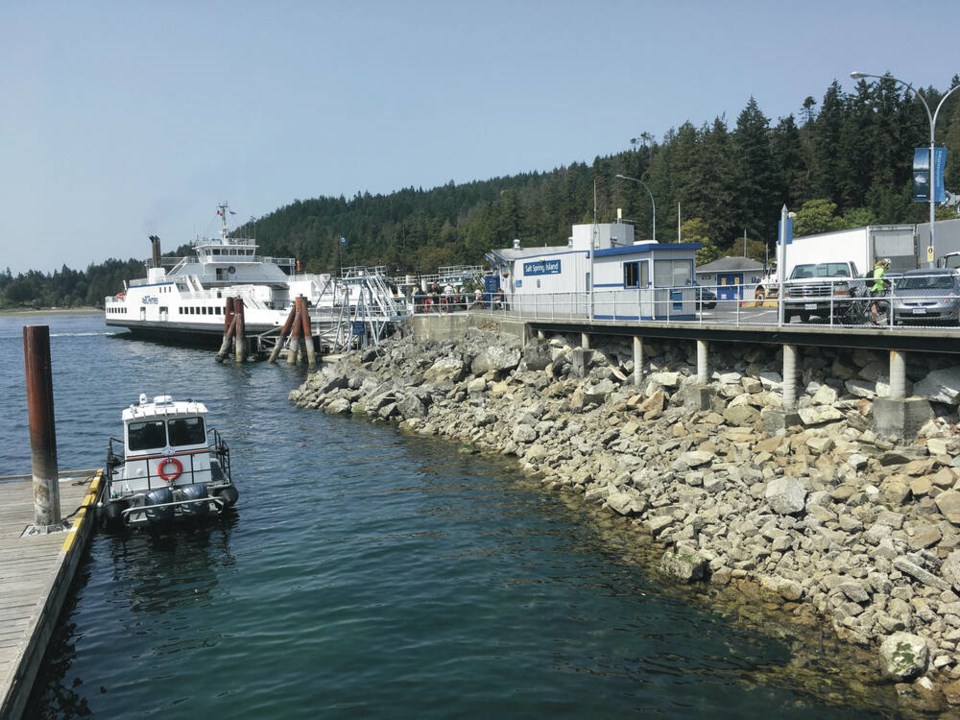A commentary by the co-chair of Salt Spring Solutions.
Lack of housing is an issue in communities large and small across sa国际传媒. However, one of the key reasons that solving the housing crisis on Salt Spring Island has been a particularly tough nut to crack is because of the fragmented nature of the island’s governance and lack of coordination and collaboration between a variety of agencies which all have some role to play in housing.
Salt Spring Solutions (a non-profit community organization) has been involved in the housing conversation on Salt Spring for five years, and what we’ve learned in that time is that organizations like the Islands Trust and the Capital Regional District were talking about housing, but not necessarily to or with each other, or in reference to previous work within their own organizations.
Countless reports have been written on housing, however none of them sufficiently stepped out of their organizational silos to consider the big picture, or to address the need for inter-agency cooperation and problem-solving.
The unhindered (and perfectly legal, under the current land use bylaw) development of estate-sized resource-intensive single-family houses is having multiple adverse impacts on our island.
Housing regulations that may have worked 15 years ago when the Official Community Plan was created no longer serve the community.
The OCP vision is still relevant today, but the strategies for achieving it have, quite necessarily, changed. Evidence-based planning tools, best practices and lessons from other communities have emerged which can better serve our environment and community.
Salt Spring requires forward-looking solutions, not continuation of practices that are outdated and harmful.
Today, a whopping 80 per cent of the housing on Salt Spring is single-family homes and our fastest growing demographic is retirees. Our working age community-members (which includes our hospital staff, sa国际传媒 Ferries workers, school, transit, tourism and service industry employees) cannot find a place to live and are moving away.
When you’re on an island you can’t simply draw employees from a neighbouring suburb with cheaper housing and a highway commute.
Deforestation and soil erosion, loss of green space and wildlife corridors, stressed freshwater resources, increased vehicle trips and greenhouse gas emissions, the prevalence of unregulated housing, and the destabilizing of our island economy and social fabric are some of the existing impacts we anticipate will worsen without proactive, coordinated intervention and persistent leadership on housing.
In a 2022 Vital Signs survey by the Salt Spring Foundation, the majority of Salt Springers said they were alarmed by the critical lack of housing options in our community for working people and vulnerable residents who already live here.
Instead of writing angry letters and waiting for someone else to ‘do something’ our small volunteer non-profit spent the past year researching, collaborating on and creating a framework for local housing solutions that, for the first time, integrates into one document the responsibilities of the various government bodies that have a role to play in housing.
It begins to address the environmental, economic and social issues integral to housing solutions for our small island community by:
- Being achievable within the existing local, regional, and provincial regulatory context.
- Supporting smaller scale housing types that are known to have less adverse impacts on the natural environment than typical single-family home development.
- Supporting efficient use of land, water services and infrastructure.
- Not requiring large-scale land clearing of forest or harm to sensitive ecosystems.
- Being financially viable to develop and operate.
- Improving the availability and/or affordability of long-term housing options for a range of household types and incomes.
- Being compatible with and/or enhancing island rural community characteristics, such as self-sufficiency, interdependence, neighbourliness, and low impact living.
- Supporting increased uptake of transit and/or active transportation.
The framing of ‘housing versus environment’ is an old trope that isn’t helping us evolve or adapt in the ways that are needed today, and serves mostly to paralyze decision-making, place blame, and divide our community.
The vitality in our small rural island communities is in building trust and relationships, finding common ground and alignment, getting creative and encouraging innovation.
It’s time for the spotlight to shift from complaining and waiting for senior government to come along and fix things to actively problem-solving and leveraging the myriad sparks of potential here on Salt Spring and across the Gulf Islands.
There’s still magic here, in the forest and in the community, let’s honour that by tending to our shared responsibility for community building.
is available at .
>>> To comment on this article, write a letter to the editor: [email protected]



